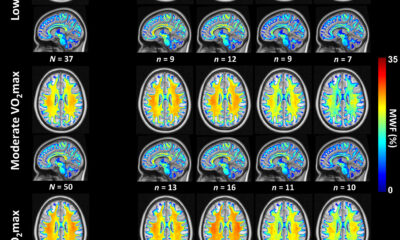Health
The homicide rate is a major factor in the gap between the life expectancy of blacks and whites, research shows

Disparities in homicide mortality rates between black and white men, 1990–2021. Credit: Light et al., 2024, PLOS ONECC-BY 4.0 (https://creativecommons.org/licenses/by/4.0/)
Homicide is a major reason behind the lower and more variable reduction in life expectancy for black men rather than white men in recent years, according to a new study published August 21, 2024 in the open access journal PLOS ONE by Michael Light and Karl Vachuska from the University of Wisconsin-Madison, USA.
The COVID-19 pandemic caused a staggering decline in life expectancy in the US and significantly increased black-white lifespan inequality. It also coincided with the largest annual increase in homicide rates in the US in more than a century, with black men bearing the brunt.
Despite these trends, there has been limited research on the contribution of homicide to black-white life expectancy inequality during the pandemic.
In the new study, researchers used mortality data and multiple cause of death databases from the National Vital Statistics System division of the National Center for Health Statistics. The data covered the period 2019 to 2021 and the causes of death were divided into twenty main groups.
While black men were expected to live an average of 71.4 years in 2019, this fell to 67.7 years in 2020. For white men, the corresponding decline was only from 76.4 years to 74.9 years. As a result, the racial gap in life expectancy increased from 5.0 to 7.2 years fewer for black men than for white men.
The researchers found that homicide was the largest contributor to inequality in both life expectancy and longevity variability between black and white men in 2020 and 2021. Homicide accounted for a much larger share of the racial gap in longevity and variability in longevity than deaths from COVID-19. For example, in 2021, the impact of homicide on the racial gap in lifespan variability was nine times greater than deaths from COVID-19.
The authors conclude that addressing homicide rates should be at the forefront of any public health discussion aimed at promoting racial health equity.
The authors add: “The increase in homicide rates is one of the main reasons why the lifespan of black men has become shorter than that of white men in recent years. In 2020 and 2021, homicide was the largest contributor to inequality in both life expectancy and longevity variability between black and black men. White men account for a much larger share of the racial gap in longevity and variability than deaths from COVID-19.”
More information:
PLoS ONE (2024). DOI: 10.1371/journal.pone.0308105
Quote: Homicide rates are a major factor in the gap between black and white life expectancy, study shows (2024, August 21), retrieved August 22, 2024 from https://medicalxpress.com/news/2024-08-homicide-major -factor- gap-black.html
This document is copyrighted. Except for fair dealing purposes for the purpose of private study or research, no part may be reproduced without written permission. The content is provided for informational purposes only.













